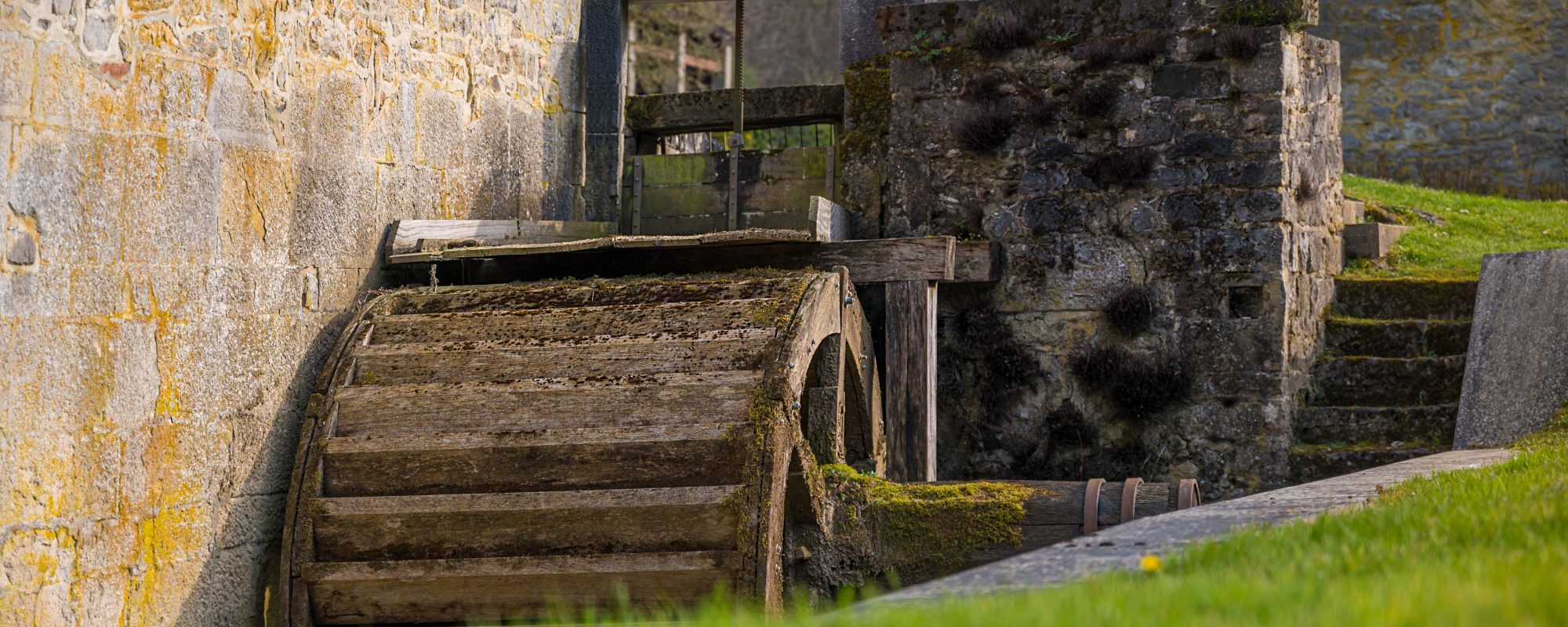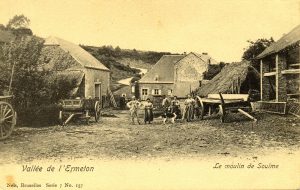Soulme Mill
A peaceful, prime location along the Hermeton River for this harmonious ensemble whose origins date back to the 15th century - Listed monument.

A peaceful, prime location along the Hermeton River for this harmonious ensemble whose origins date back to the 15th century - Listed monument.

Beautifully restored, the Soulme mill occupies a peaceful site along the Hermeton. Its existence is attested as early as the 15th century. Rebuilt at the beginning of the 16th century, it became a so-called “banal” mill: the miller pays an annual rent which appears in the registers of the abbey of Florennes.
In its current state, the building dates from the 17th and early 18th centuries. The date 1774 is engraved in various places, notably on a stone near the millstream. This millstream, built in the second half of the 17th century, brings the water to the mill from the upstream dam, passes underground under the mill yard, and returns to the open air a few metres before the first wheel. The mill is completed by the miller’s dwelling and the outbuildings where grain and flour were stored, both dating from the end of the 17th century; as well as a 19th century barn and bread oven.
Together with its land and the works built upstream (dam, regulation gates on the Hermeton, canalized reach, gates preceding the wheel) and downstream (bridge over the Hermeton, culvert over the reach), the Soulme mill is classified as a monument.
Today, a gîte has been set up there.
For more information, see our heritage sheet.
ANCIEN MOULIN
Chem. du Vieux Moulin – 5680 Soulme
MAISON DU TOURISME PAYS DES LACS
Route de la Plate Taille, 99 – 6440 Boussu-lez-Walcourt
+32(0)71/14 34 83
OFFICE DU TOURISME DE DOISCHE
Rue du Bois du Fir, 115 – 5680 Doische
+32(0)82/74 49 42
The association Les Plus Beaux Villages de Wallonie (The Most Beautiful Villages of Wallonia) oversees a network of 32 villages, bearers of a strong territorial identity and reflecting traditional architecture. It is committed to promoting the rural, cultural and natural heritage of Wallonia and is a part of the development of local and responsible tourism.
More information